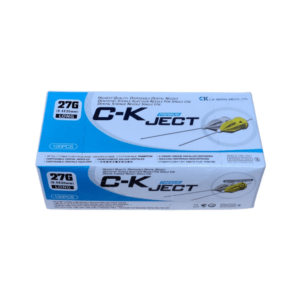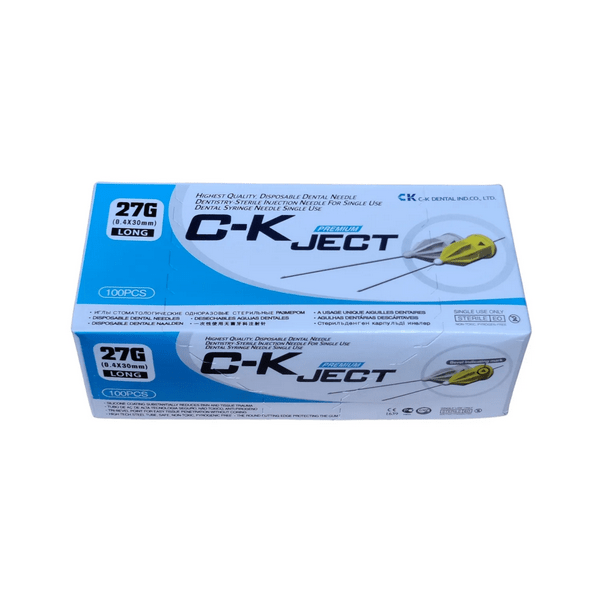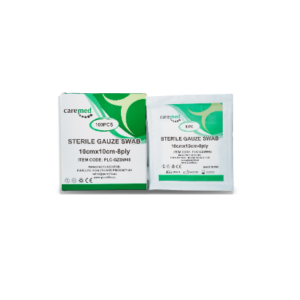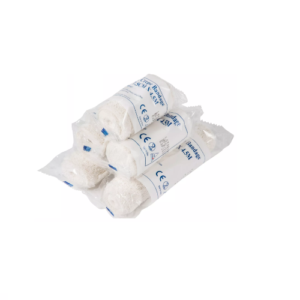Dental Needle

it is a specialized, thin needle used in dentistry to administer local anesthesia, helping to numb specific areas in the mouth during procedures. Designed to minimize discomfort, it features a beveled tip for smoother insertion and typically connects to a dental syringe.
Dental Needle supplier UAE
Dental Needle supplier Abu Dhabi
Dental Needle supplier Dubai
Dental Needle supplier Sharjah
Dental Needle supplier Ajman
Dental Needle supplier Ras Al Khaimah
Dental Needle supplier Fujairah
Dental Needle supplier Umm Al Quwain
A dental needle is a critical tool in modern dentistry, primarily used for administering local anesthesia to patients. It allows dental professionals to perform procedures such as fillings, root canals, extractions, and other treatments without causing pain or discomfort. Dental needles are specifically designed for precision, comfort, and safety, making them essential for ensuring that patients remain pain-free during dental treatments
The main purpose of a dental needle is to deliver anesthetics directly to the targeted area of the mouth, numbing the nerves and ensuring that the patient doesn’t feel pain during procedures. Without the use of local anesthesia, many dental treatments would be too painful for patients to tolerate The dental needle ensures that only the specific area being treated is numbed, allowing the dentist to perform complex procedures with ease while the patient remains comfortable
A dental needle consists of several components, each serving an important function in the injection process. The needle hub is the part of the needle that connects to the syringe. It ensures a secure attachment and helps control the flow of anesthetic. The needle shaft is the long, hollow portion of the needle, made from stainless steel for strength and durability. This shaft carries the anesthetic solution from the syringe to the treatment site. The bevel, or slanted end of the needle, is designed to allow smooth and precise entry into the tissue, minimizing discomfort during the injection. The lumen is the hollow space inside the needle through which the anesthetic flows, and the tip of the needle is carefully designed to be sharp to facilitate easy insertion into the tissue
Dental needles come in different sizes and gauges, and their selection depends on the procedure being performed. Short needles are typically used for more superficial procedures, where the anesthetic only needs to reach the surface tissues, while long needles are used for deeper procedures, such as when numbing the lower jaw or performing root canals. The gauge of the needle refers to its thickness; thinner needles (higher gauge numbers) are often used for more delicate injections to minimize discomfort, while thicker needles (lower gauge numbers) may be used for more substantial injections requiring greater control
When a dentist prepares to administer an injection, they often apply a topical anesthetic first. This numbs the surface of the gums or oral tissues and makes the insertion of the needle less painful. Once the topical anesthetic takes effect, the dentist carefully positions the needle and slowly injects the anesthetic solution into the targeted area. It’s important for the dentist to inject the anesthetic slowly, as rapid injection can cause discomfort or pressure in the tissue
Patient comfort and anxiety are key concerns when administering dental injections. To address this, dentists often use techniques to minimize pain One of the most common methods is the use of slow injection techniques, where the anesthetic is delivered at a controlled rate to reduce the sensation of discomfort. Additionally, modern needle designs focus on making the process as painless as possible. Many dental needles are now coated with silicone or other materials that help reduce friction and prevent unnecessary pain during the injection. Some dental offices also employ distraction techniques, such as talking to the patient or using visual or auditory distractions, to help ease anxiety and discomfort
Technological advances in dental practice have introduced computer-controlled anesthetic delivery systems that regulate the flow of anesthetic, ensuring that it is delivered at the optimal pressure and rate. These systems provide even more precise and comfortable injections by preventing the sudden release of pressure, which can cause pain. Another innovation is the development of needle-free injection systems, which use high-pressure technology to administer the anesthetic without the need for a needle. Though not widely used yet, these systems offer a promising alternative for patients with a fear of needles
Safety is a top priority when using dental needles. Single-use needles are standard in most dental practices, ensuring that they are sterile and free of contaminants.
Each needle is disposed of after a single use to prevent the spread of infections. Additionally, the sterilization process in dental offices is rigorous, with tools and equipment being thoroughly disinfected after each use according to strict hygiene stand
In conclusion, dental needles are indispensable in the field of dentistry Their design, evolution, and usage ensure that patients experience as little discomfort as possible while undergoing necessary dental treatments With continued advancements in technology and anesthetic techniques, the process of using dental needles will only become more precise, comfortable, and efficient, improving the overall patient experience in dental care







user –
Go to tool for Dentists